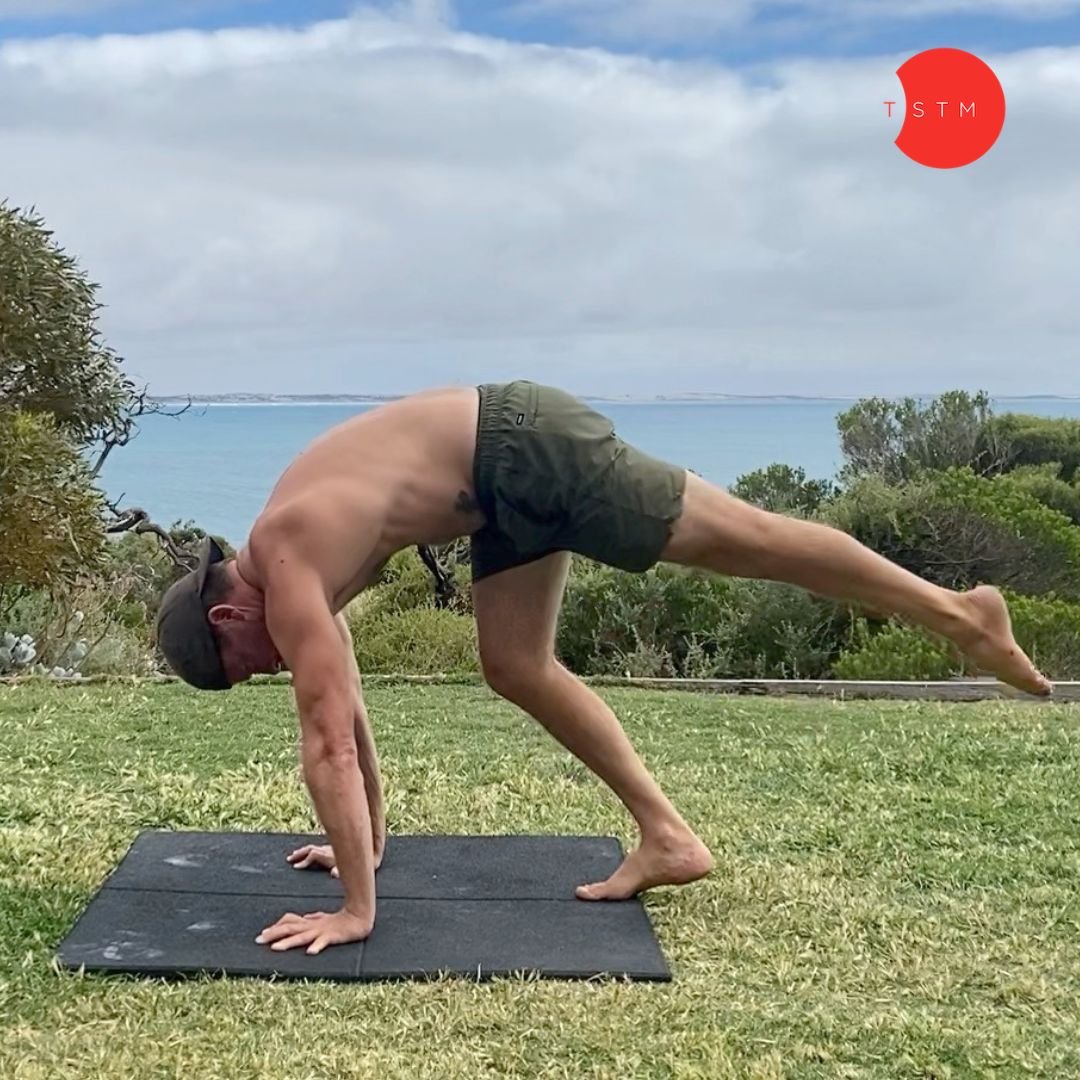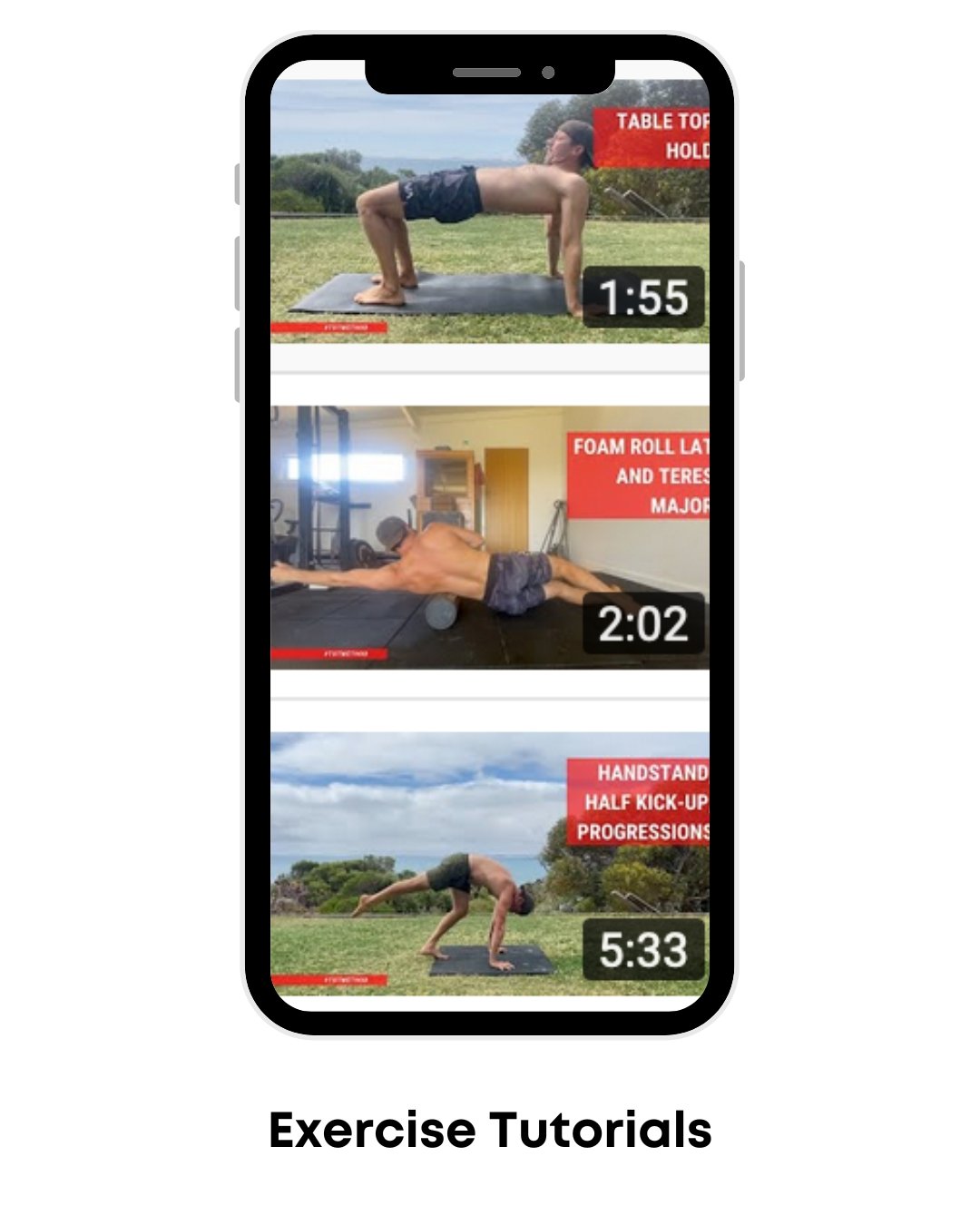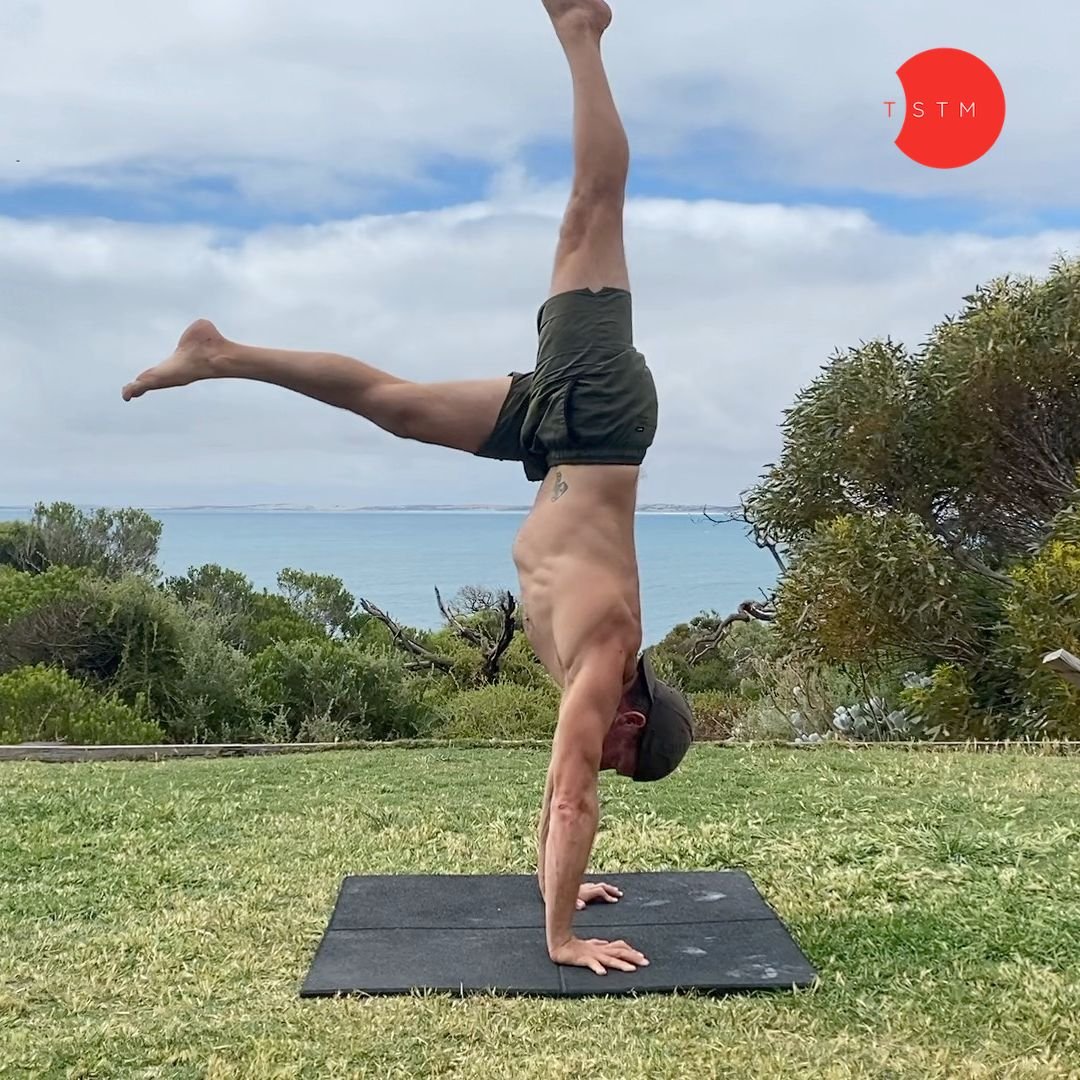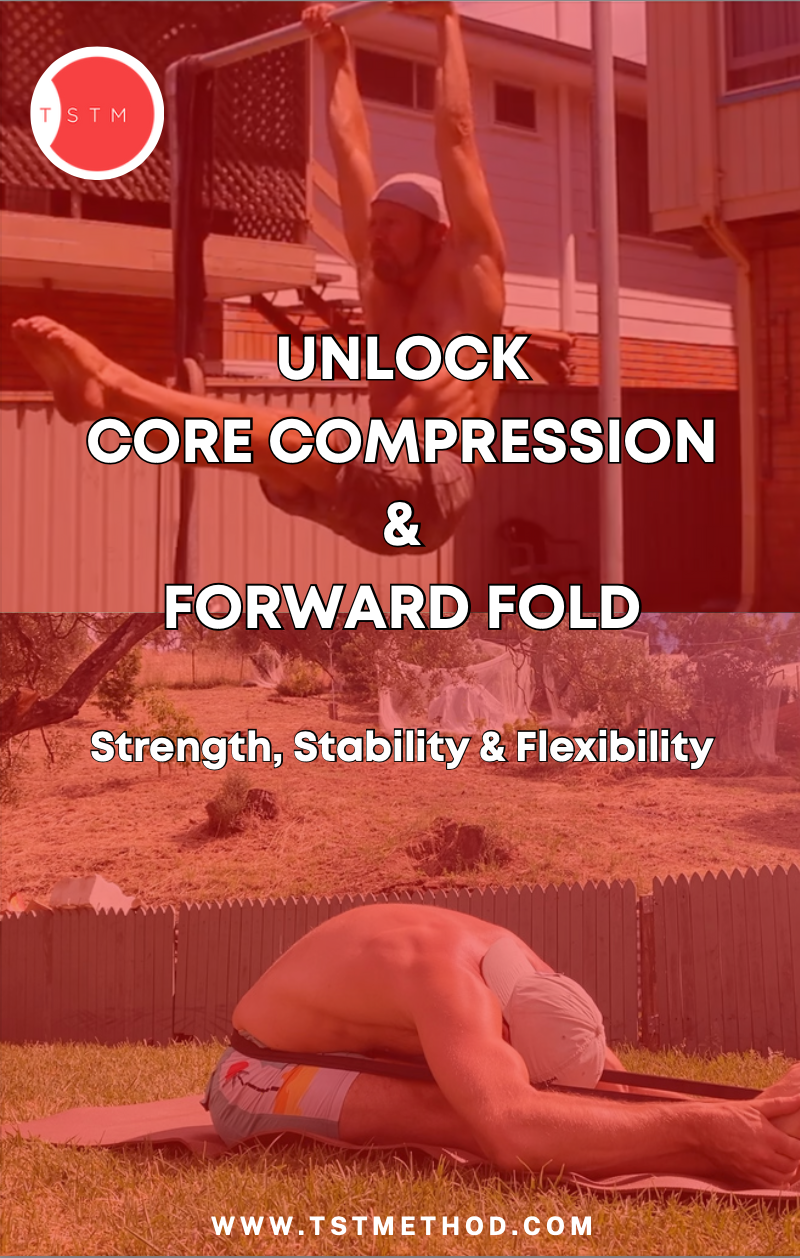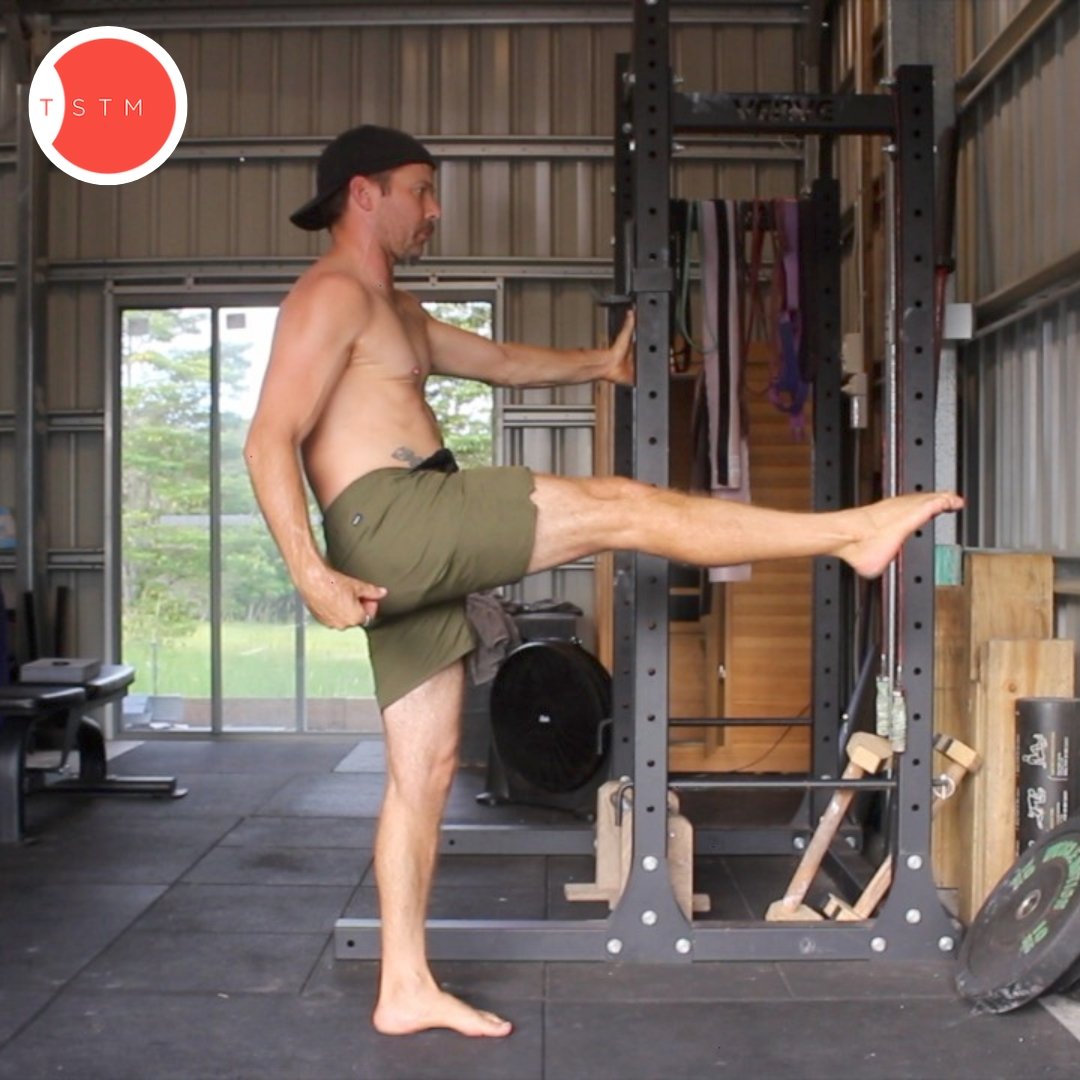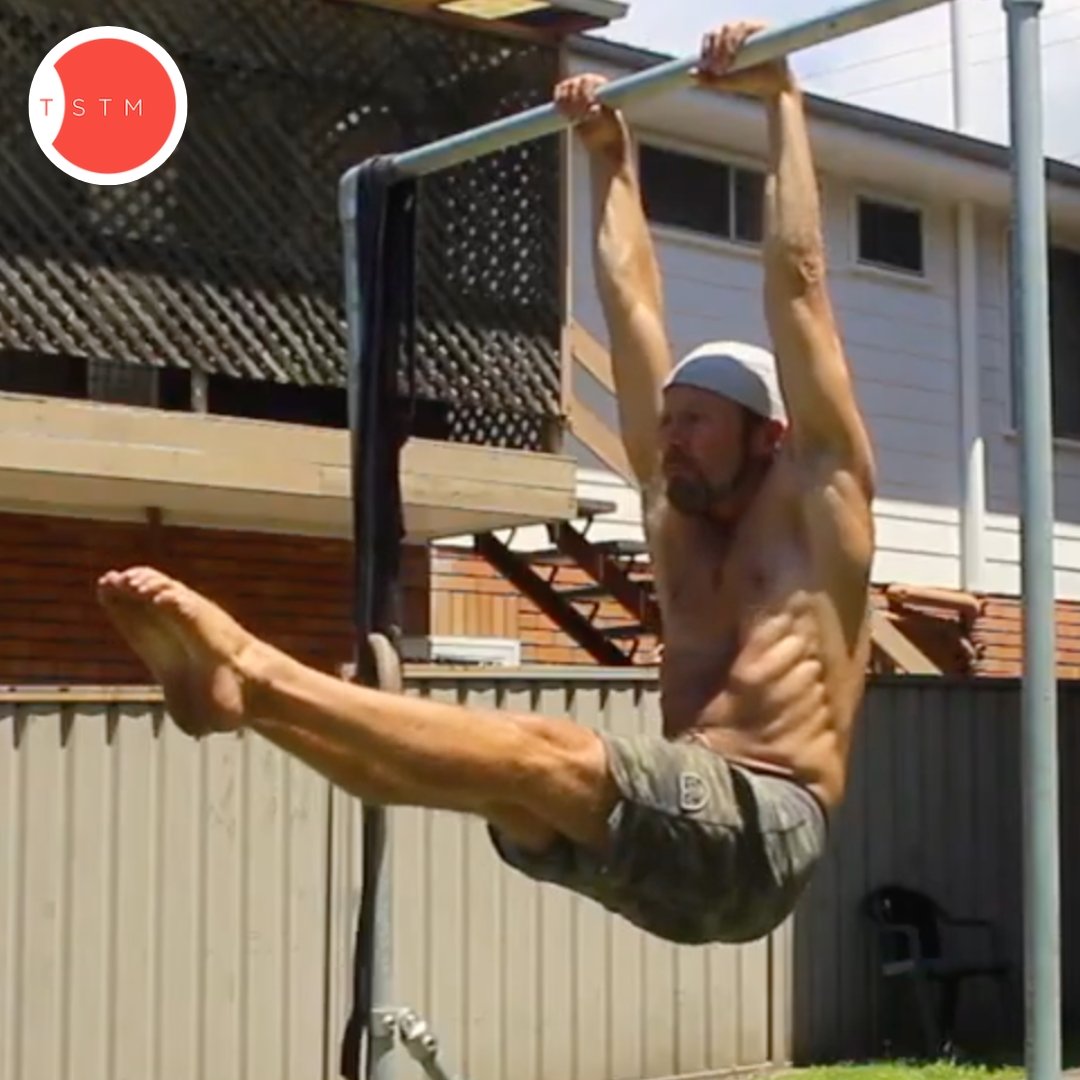FREE Beyond 40 Flexibility Intro
Welcome to the Beyond 40 Flexibility Intro Program, designed to improve your flexibility while reducing the aches, pains and stiffness that often creep up on you in midlife.
It’s never too late to increase flexibility.
We’ve worked with hundreds of clients of all ages to help them reduce joint and muscle pain, increase their range of motion, improve movement quality, and enhance their day-to-day performance by training flexibility.
Start reducing the aches, pains and stiffness that creep up you in midlife.
Welcome to the Beyond 40 Flexibility Intro Program, designed to improve your flexibility while reducing the aches, pains and stiffness that often creep up on you in midlife.
It’s never too late to increase flexibility.
We’ve worked with hundreds of clients of all ages to help them reduce joint and muscle pain, increase their range of motion, improve movement quality, and enhance their day-to-day performance by training flexibility.
Unfortunately, modern sedentary lifestyles are linked to physical and mental health issues: sore knees, hip pain, lower back pain, and neck, shoulder, elbow and wrist pain are often caused by structural imbalances of the muscles.
Tight, weak, overused muscles, and underused muscles can affect the alignment of the joints and our posture, which can lead to chronic pain.
What are the goals of the B40 Flexibility Intro Program?
The Beyond 40 Flexibility Intro Program is designed to improve your flexibility while reducing the aches, pains and stiffness that often creep up on you in midlife.
As we age, we start to value our health, happiness and longevity even more. We want to stay pain-free and independent for as long as possible.
Training flexibility is a lot like building strength and improving aerobic fitness. Consistency is key.
It’s all about building the right habits.
This is where it helps to have a program to follow.
The goal is to build a flexibility practice into your lifestyle and reap the rewards.
The Beyond 40 Flexibility Intro Program
The Beyond 40 Flexibility Into has been designed to target some of the most common tight and stiff areas in midlife - hips, shoulders, ankles and spine.
There are three separate sessions:
Session 1: Lower Body:
This session targets the feet, ankles, hips, inner thigh, glutes, quads and hamstrings.
Session 2: Upper Body:
This session targets the shoulder external rotators, chest, biceps, lats, wrists, triceps, and shoulders.
Session 3: Spine:
An old Chinese proverb says, “You are as old as your spine.” A supple spine that moves freely in all directions helps us feel much younger. In this session, you will work on forward flexion, extension, rotation, lateral flexion, and stretching the diaphragm muscle.
The goal is to perform each session once weekly for at least 6 weeks.
Program Details
There are three 20-30min training sessions each week.
We recommend following the program for a minimum of 6 weeks.
Equipment List:
You will need to have access to the following list of equipment:
A small hard ball like a lacrosse ball
Broomstick or something similar
A wall that you can perform stretches against
An elevated surface like a chair or a box
A yoga block and/or some cushions
Beyond 40 Flexibility Intro
FREE
$150.00AUD
How the program works?
Three program cards for upper, lower and spine flexibility
A deep dive into all the program details.
Video tutorials for all exercises.
When you download the Beyond 40 Flexibility Progeam, you’ll have access to all these goodies immediately.
🌟 Why Choose Our Program?
✅ Gymnastics Expertise: Our program has been crafted by coaches passionate about flexibility, strength, health and longevity. We've distilled years of experience into a comprehensive program that will guide you toward improving your flexibility and feeling better in your body.
✅ Progress at Your Pace: Our program caters to all skill levels, whether you're a complete flexibility beginner or an ex-gymnast. Each session is designed to challenge you positively.
✅ Sustainable Training: We don't just focus on the static stretches. Our program integrates various stretching methods that enhance your overall body awareness, flexibility, balance, and strength, setting the stage for improved movement quality.
✅ Comprehensive Workouts: Unleash your body's potential with carefully curated workouts that focus on building balance, strength and flexibility. Our workouts are designed to maximize your progress while minimizing the risk of injury.
✅ Video Tutorials: Visual learning is powerful. Our program includes detailed video tutorials that break down every aspect of the stretch. You'll have a front-row seat to proper execution, ensuring you understand and master each technique.
✅ Personalised Support: We're here for you every step of the way. If you have questions, need feedback, or want to share your progress, our dedicated support team is just an email away.
What are the prerequisites?
The only prerequisite for the Beyond 40 Flexibility intro program is that you're not carrying any injuries.
If you've got an injury and want help fixing it, don't hesitate to contact us for individual design coaching.
What are the commitment levels?
3 x 20-30min sessions per week
Every session will leave you feeling more supple, but for lasting results, we recommend sticking to the program for a minimum of 6 weeks.
Can I combine handstand training with my other training sessions?
Yes. We recommend doing strength training to help support your flexibility journey. You can also do yoga, gym classes, spin, or go for a run. We see this program as an add-on to your existing training.
Can I do the sessions more than once per week?
Yes. It’s best to start with doing each session once weekly and then increase it to two if you like. For some people, this will speed up the results, but you will also make good progress by just doing each session once per week.
When we increase the frequency, we can sometimes apply too much stress to the joints, muscles and connective tissues. This can lead to pain or even injury. So take it slow and listen to your body.
Can I use a phase for more than six weeks?
You certainly can. Spending more time on a flexibility phase can be helpful.
What if I cannot do one of the exercises?
Never try to push through pain. Often there are ways to regress certain movements by using different tools, like yoga block, to assist the stretch. See if you can support some of your weight through another part of your body to decrease the level of intensity on the muscle being stretched.
Flexibility or strength limitations can often stop us from performing specific movements. Try to figure out what’s holding you back. If it's strength, how can you build more strength in this area? If it's flexibility, what stretches can you train to increase flexibility? Check out The Sustainable Training Method YouTube channel for ideas.
FREE Adult Beginners Handstand Program
A lot of adults want to learn to handstand, but they have a fear of getting hurt, or they don’t know where to start.
Maybe you’ve tried kicking up to a handstand against a wall, attempted handstands in your yoga classes, or watched countless YouTube tutorials. But none of it seems to be helping.
At TSTM, we believe it’s never too late to unlock new skills like handstands.
Designed for adults who want to learn to handstand.
A lot of adults want to learn to handstand, but they have a fear of getting hurt, or they don’t know where to start.
Maybe you’ve tried kicking up to a handstand against a wall, attempted handstands in your yoga classes, or watched countless YouTube tutorials. But none of it seems to be helping.
Learning to handstand can be frustrating as an adult, and it often feels like you’ll never be able to master it.
At TSTM, we believe it’s never too late to unlock new skills like handstands.
We’ve helped hundreds of adults learn to handstand.
This is why we created the Adult Beginners Handstand Program and give it away for FREE.
What are the goals of the ABHS Program?
We’ve defined several key milestones in each phase as part of the program. Learning to handstand is a journey, and it helps to define milestones along the way.
The milestones for completing phase 1 are:
✅ Walk your chest to the wall in a Wall Facing Handstand.
✅ Hold the BBLD and FBLD for 45+ seconds
✅ Hold the wall facing 45-degree Handstand for 45+ seconds
The milestones for completing phase 2 are:
✅ Hold 60sec Chest to Wall Handstand
✅ Feel comfortable Cartwheeling out of a handstand
✅ Have a good understanding of how to kick up to handstand (this doesn't mean you need to be able to kick up and hold a handstand; it is more about understanding the critical aspects of the kick-up).
This might sound like a lot, but the program's goal is to build the capacity to accomplish these milestones gradually.
The Adult Beginner Handstand Program:
1. General Physical Preparation
Preparing the body for the demands of handstand training. We must continue to build the capacity required to meet the physical demands of the training volume, intensity and frequency.
2. Specific Conditioning
Progressively strengthen the joints, muscles, and connective tissues and build body awareness for handstands. This also includes having the confidence to fall out of a handstand safely.
3. Rebalance
We are building the strength, control and awareness to balance on your hands.
4. Kick-ups
Start developing the skill of kicking up to handstand.
These elements are a continuing practice throughout the handstand journey, not just at the beginner's level.
As you progress and learn more advanced handstands, you must continue to work on all four elements.
This adult beginners program covers beginner drills in each of the above elements.
Program Details
There are two phases of training.
Each phase is six weeks long.
There are two sessions per week in each phase.
Each session is roughly 60 minutes of training.
Equipment List:
You will need to have access to the following list of equipment:
• A foam roller and an orb ball are also suitable investments.
• Broomstick or something similar.
• A set of Parallettes (or some heavy kettlebells or hex dumbbells)
• Light dumbbell weights (2-10kg)
• Pull-up bar (or something to hang from)
• A wall you can do handstands against
This equipment can be purchased online and set up in your home, and most gyms will have this equipment.
Adult Beginners Handstand
FREE
$150.00AUD
How the program works?
Receive two 6week training phases.
A deep dive into all the program details.
Video tutorials for all exercises.
When you download the Adult Beginners Handstand Progeam, you’ll have access to all these goodies immediately.
ABHP - Phases 1
In phase 1, the primary goal is to start building confidence in the handstand. The primary moves for this are 45-degree wall-facing handstands and wall walk-ins.
By the end of phase 1, you want to be comfortable:
✅ Walking your chest to the wall in a Wall wall-facing handstand.
✅ Holding the BBLD and FBLD for 45+ seconds
✅ Hold the wall facing 45-degree Handstand for 45+ seconds
For some people, this might take longer than six weeks.
We break the handstand into alignment, strength, balance and overall conditioning. Each of these elements is key to unlocking the handstand.
We want to take this slow and allow the body to adapt over time. You will notice that the hold times, sets and reps change as the weeks continue. This will enable you to gradually prepare your joints, muscles and connective tissues while increasing your capacity.
In phase 1, you'll also begin learning the components that make up the handstand. Posterior pelvic tilt (PPT), shoulder elevation, body alignment, shoulder flexion, and balancing on your hands.
At the same time, we also want to do our best to maintain structural balance. Handstand training requires a lot of straight arm shoulder elevation, which can lead to an imbalance in the muscles of the shoulders. Left unchecked, it can often lead to wrist, elbow, neck, and shoulder pain.
To balance out the shoulder elevation, we use movements like prone arm raises, reverse flies, shoulder external rotations, dip shrugs, and tabletop holds.
ABHP - Phase 2
In many ways, phase 2 is very similar to Phase 1, but you'll notice the reps and hold times increase.
We also introduced the wall-facing cartwheel out of the handstand and handstand kick-up drills.
By the end of phase 2, you want to be comfortable:
✅ Holding 60sec Chest to Wall Handstand
✅ Cartwheeling out of a handstand
✅ Have a good understanding of how to kick up to handstand
(this doesn't mean you need to be able to kick up and hold a handstand; it is more about understanding the critical aspects of the kick-up).
For some people, this might take longer than six weeks.
We continue building endurance in the back body and front body line drills.
We also continue to work on the wall walk-ins as a conditioning and confidence drill, which allows you to achieve the 60-second chest-to-wall handstand hold.
Learning to fall out of the handstand safely helps us overcome the fear of handstands. The fear is often associated with the inability to control the falling process and potentially getting hurt. We use the wall-facing cartwheel to deliberately fall out of the handstand and learn to land safely on our feet.
In this phase, we introduce handstand kick-ups with the half-kick-up progressions and the push-up slide-to-pike drill. Kick-ups are a skill that requires a lot of patience and practice. It’s important to start introducing kick-ups as early as possible.
Finally, we continue to maintain structural balance with drills like prone arm lifts, hanging, tabletop to seated, trap 3 raises, and shoulder external rotations.
You get both phases for:
FREE
$150.00AUD
🌟 Why Choose Our Program?
✅ Gymnastics Expertise: Our program has been crafted by coaches passionate about gymnastics strength training and understanding the nuances of body control, balance, and strength. We've distilled years of experience into a comprehensive program that will guide you toward achieving the perfect pistol squat.
✅ Progress at Your Pace: Our program caters to all skill levels, whether you're a complete beginner or an intermediate adult gymnastic skill seeker looking to refine your skills. Each program phase builds upon the last, offering a structured and adaptable approach to skill acquisition.
✅ Sustainable Training: We don't just focus on the pistol squat alone. Our program integrates a variety of gymnastics-inspired exercises that enhance your overall body awareness, flexibility, balance, and strength, setting the stage for your pistol squat success.
✅ Comprehensive Workouts: Unleash your body's potential with carefully curated workouts that focus on building the balance, strength and flexibility required for the pistol squat. Our workouts are designed to maximize your progress while minimizing the risk of injury.
✅ Video Tutorials: Visual learning is powerful. Our program includes detailed video tutorials that break down every aspect of the skill. You'll have a front-row seat to proper execution, ensuring you understand and master each technique.
✅ Personalised Support: We're here for you every step of the way. If you have questions, need feedback, or want to share your progress, our dedicated support team is just an email away.
FAQ’s
What are the prerequisites?
The only prerequisite for AHBP is that you're not carrying any injuries.
If you've got an injury and want help fixing it, don't hesitate to contact us for individual design coaching.
What are the commitment levels?
2 x 60min sessions per week
12 weeks of training - This depends on your level of progress, constancy, and lifestyle factors.
Can I combine handstand training with my other training sessions?
Yes. We recommend doing something other than a high-volume upper-body session 1-2 days before these sessions. If you have upper body DOMS, it will make the ABHP less fun, plus the quality of your training will be impacted.
It is best to structure your training to do lower body, cardio, or something light on the upper body muscles the day before ABHP sessions. You can do heavy upper-body strength training on the same day as ABHP, but do the heavy lifting first.
Can I train handstands more than twice per week?
Yes, you can. But, for most adults, it is best to start with two weekly sessions and gradually increase the frequency. Pay close attention to your recovery and how your wrists, elbows and shoulders feel.
When we increase the frequency, we can sometimes apply too much stress to the joints, muscles and connective tissues. This can lead to pain or even injury. So take it slow and listen to your body.
Can I use a phase for more than six weeks?
You certainly can. Spending more time on a handstand phase can be helpful, especially if you’ve not yet accomplished the milestones.
Take your time with the handstand journey. You can take it slow and enjoy the process. Putting in the work now will speed up the process down the path.
What if I cannot do one of the exercises?
Bugger! You might need to regress the movement if you have trouble with a particular exercise. Could you review the previous phase's exercises and revisit the progressions?
Flexibility or strength limitations can often stop us from performing specific movements. Try to figure out what’s holding you back. If it's strength, how can you build more strength in this area? If it's flexibility, what stretches can you train to increase flexibility? Check out The Sustainable Training Method YouTube channel for ideas.
FREE Core Compression Strength & Forward Fold Felxibility Program
A lot of adult gymnastics skill seekers want to build core strength and increase flexibility, but they don’t know where to start.
Maybe you’ve done some sit-ups, hanging leg raises and planks, but your core still feels week.
Maybe you’ve tried stretching your hamstrings, glutes and calves, but you still can’t hold and L-Sit, get your Toe-to-Bar, perform Pistol Squats, or do a Skin the Cat on gymnastics rings without bending your knees.
As an adult it’s easy to make the excuse that we’re not flexible.
Designed for adults who want to build core compression strength and touch their toes.
A lot of adults want a stronger core and the ability to touch their toes, but they don’t know where to start.
Maybe you’ve done some sit-ups, hanging leg raises and planks, but your core still feels weak.
Maybe you’ve tried stretching your hamstrings, glutes and calves, but you still can’t hold and L-Sit, get your Toe-to-Bar, perform Pistol Squats, or do a Skin the Cat on gymnastics rings without bending your knees.
As an adult, it’s easy to make excuses that we’re not flexible.
At TSTM, we believe it’s never too late to build strength, increase flexibility, and unlock new gymnastics skills.
Increasing your FORWARD FLEXIBILITY and building CORE COMPRESSION STRENGTH are an essential part staying pain free and maintaining your freedom.
The Core Compression and Forward Fold Program:
1. Stretch and strengthen you posterior chain.
We often overlook the importance of flexibility, especially regarding our hips. Many adults experience back pain because they hold a lot of tightness in their hips. Unlocking your gymnastics pike is an achievable goal for everyone.
You can read about pike training in “How to start training pike flexibility.”
2. Increase Core Compression Strength
Building core strength is essential to unlock movements like L-Sits, Strict Toes-To-Bar, Pistol Squats, Skin the Cat, and Press to Handstand with good form.
Strengthening your lower abdominals and hip flexors also improves hip stability and extension strength, not to mention hip mobility.
You can read more about core compression strength in “How to start training core compression strength.”
3. Increase ankle flexibility
Tight ankles have a massive impact on our posture, squat depth, forward fold flexibility and more. Left unchecked, tight ankles can lead to ankle, knee, hip and lower back pain.
When working to improve pike flexibility, we need to lengthen and strengthen the muscles of the ankles.
You can learn more about ankle flexibility in “A commonly overlooked part of pike and pancake flexibility”
4. Build a foundation of strength and flexibility
A lot of adult gymnastic skill seekers fail to unlock gymnastics skills because they lack strength and flexibility. Pike flexibility and core compression strength are essential for movements such as L-Sits, V-SIts, Toe-to-Bar, Pistol Squats, Skin the Cat, Press to Handstand, and more.
If you fail to build strong foundations, you’ll always find it hard to progress towards your gymnastics goals.
Program Details
There are six phases of training.
Each phase is 4-6 weeks long.
There are two sessions per week in each phase.
Each session is roughly 15-20minutes of training.
Equipment List:
Dumbbells
Low elevation for calf raises
High elevation for stretches (box or bench)
Yoga block
Pull-up bar or gymnastics rings
Barbell (optional)
Core Compression and Forward Fold
FREE
$600.00AUD
How the program works?
Receive six separate 4-6week training phases.
Video tutorials for all exercises.
When you download The Core Compression and Forward Fold, you’ll have access to all of these goodies right away.
CC & FF - Phases 1-3
The first three phases of the program are very similar. Each consecutive phase is designed to progress the previous phase gradually. Phase by phase, strength and flexibility will improve and prepare you for the program's second half.
DAY 1:
Each day 1 session in the first three phases has three exercises.
The first exercise is designed to strengthen and length the hamstrings while also teaching you to move the pelvis into an anterior pelvic tilt (APT). The goal is to maintain a flat back and progress to the point where the torso is parallel to the floor.
The second exercise is a supine core compression exercise designed to strengthen the hip flexors muscles. Maintaining a straight leg while lifting it past 90 degrees of hip flexion is the goal.
The third exercise is a bent-knee calf raise designed to strengthen and lengthen the calves. There is no defined goal here, but you will notice an increase in ankle flexibility by the end of the three phases.
DAY 2:
Each day 2 session in the first three phases has three exercises.
The first exercise is both a core compression and forward fold flexibility exercise. The goal is to contract the muscles of the anterior chain while lengthening the posterior chain muscles.
The second exercise is a hanging core compression exercise designed to strengthen the deep hip flexor muscles. We use the same hanging L-sit progressions for all three phases, allowing you to gradually increase the lever length and overload the hip flexor muscles.
Having the knees above the vertical line of the hips is essential to help target the right muscles. Don’t try to race ahead in the progression unless you can achieve this goal.
The third exercise targets glute flexibility and helps lengthen the hip external rotators to increase the hip internal rotation range of motion.
CC & FF - Phase 4-6
Phases four to six are very similar. Each consecutive phase is designed to progress the previous phase gradually. Phase by phase, strength and flexibility will improve and prepare what’s to come.
DAY 1:
Each day 1 session has three exercises.
The first exercise is designed to strengthen and length the hamstrings while stretching the Achilles tendon to increase ankle dorsiflexion. The goal is to maintain a flat back and progress to deeper ranges of motion.
The second exercise is a standing core compression exercise designed to strengthen the hip flexors muscles. We are keeping both legs straight while lifting the working leg to 90 degrees of hip flexion or above it the goal.
The third exercise is a calf raise designed to strengthen and lengthen the calves. There is no defined goal here, but you will notice an increase in ankle flexibility by the end of the three phases.
You get all three phases for:
FREE
$600.00AUD
🌟 Why Choose Our Program?
✅ Gymnastics Expertise: Our program has been crafted by coaches passionate about gymnastics strength training and understanding the nuances of body control, balance, and strength. We've distilled years of experience into a comprehensive program that will guide you toward achieving the perfect pistol squat.
✅ Progress at Your Pace: Our program caters to all skill levels, whether you're a complete beginner or an intermediate adult gymnastic skill seeker looking to refine your skills. Each program phase builds upon the last, offering a structured and adaptable approach to skill acquisition.
✅ Sustainable Training: We don't just focus on the pistol squat alone. Our program integrates a variety of gymnastics-inspired exercises that enhance your overall body awareness, flexibility, balance, and strength, setting the stage for your pistol squat success.
✅ Comprehensive Workouts: Unleash your body's potential with carefully curated workouts that focus on building the balance, strength and flexibility required for the pistol squat. Our workouts are designed to maximize your progress while minimizing the risk of injury.
✅ Video Tutorials: Visual learning is powerful. Our program includes detailed video tutorials that break down every aspect of the skill. You'll have a front-row seat to proper execution, ensuring you understand and master each technique.
✅ Personalised Support: We're here for you every step of the way. If you have questions, need feedback, or want to share your progress, our dedicated support team is just an email away.
Core Compression and Forward Fold FAQ’s
What equipment do I need?
You will need to have access to the following list of equipment:
Dumbbells/Kettlebell(s) - a weight that you can use for movements like split stance RDLs.
An Elevated surface such as a box, kitchen chair, or a stool
An Elevated surface such as a Reebok step, weight plates, or stairs to perform calf raises on
A pull-up bar, set of gymnastics rings, or a tree branch that you can hang from
A barbell, weight plates or heavy dumbbell/kettle bell for seated calf raises.
All of this equipment can be purchased online and set up in your home and most gyms will have this equipment.
Are there any prerequisites?
No. As long as you’re injury free and up for the challenge.
If you’ve got an injury it would be best to ask your physio is this program would be suited to you, or get in touch regarding individual coaching.
What's the commitment levels?
2 x 15min sessions per week
12-18weeks of training - this depends on your individual level of progress, consistency and lifestyle factors.
Can I combine core compression and forward ford training with my other training sessions?
Yes. We recommend you do. You can either add these 15min session to the end of an existing training program, or perform them on a separate day.
Can I use a phase for more than six weeks?
You can, but you might find that progress starts to slow down. We stick to a program for a short period to allow the body to adapt to the stress of the training program.
After 4-6 weeks, the progress can start to slow down, which is a sign that a new program is required. A new program is a new set of movements that apply new stress to the body and cause it to adapt.
I've been in the same training phase for six weeks now, but I still don't feel completely comfortable with all the movements. Should I move on?
One option is to move on to the next phase and keep working once or twice a week on the drills you felt could still be improved. Doing precisely the same for too long can make the session feel tedious, and we want to be excited about going to train.
With this in mind, everyone is different, and if you aren't bored of doing the same, there's no harm in sticking to the same plan a little longer.
Move on to the next phase and see how you go. You can always go back a phase if/when you need to.
I got injured while training. What should I do?
Oh no!! Injury is a normal part of training. It happens to the best of us. It's best to keep moving if you can, but we don't suggest working through
pain.
If you've got pain, seek the help of a specialist.
I will be going on holiday for a week. Should I try to keep training?
This is entirely up to you. One of the positive aspects of having a program to follow is that you can continue to train if you have access to the equipment. In the case of the core compression and forward fold, you can take your equipment with you. This would allow you to continue following most of the program and possibly enjoy training outdoors in some beautiful nature (depending on your destination).
If the rings don't fit in your suitcase, don't beat yourself up for taking a week off, it may even be good for you!
I feel exhausted from work/not getting enough sleep. Should I try and do my session nonetheless?
If you're tired, you'll benefit more from taking a day off than forcing yourself to do something that will cause more physical and emotional stress.
You can make up for your session another day!
Can I repeat the sessions more than once a week?
There's no need to double up on the sessions, but if you find yourself having time and loving the program, we advise you to pick a few incredibly challenging drills and work on them on a different day of the week.
This can be done playfully, without the structure of the other sessions (but with mindfulness, always).
Can I split the session if I am short on time?
Yes, there's no harm in breaking the session into smaller amounts. However, core compression and forward fold flexibility assist each other. If you’re going to do less, we’d recommend cutting back on the total number of sets and not removing exercises altogether.
You should always include the warm-up to prepare the body for the sessions. Consistency is the key to progress; as long as you practise the two sessions once a week, it doesn't matter how you distribute them during your week. Do try to have at least a rest day between them.
What if I cannot do one of the exercises?
Bugger! If you are having trouble with a particular exercise, you can either skip it or take a video and send it to training@tstmethod.com, and we will do our best to offer some advice.
It would be best to talk with your physio if you have any limitations or problems with specific movements due to pain or discomfort.
Can I train effectively from home, or is it better to get a gym membership?
The program can be done from home if you can access the equipment listed in the "Equipment Needed" section. Some pieces of equipment can be substituted with creativity and depending on availability.
I don't feel like I'm making any progress. What can I do?
It's extremely unlikely you won't be making progress. We encourage all students to record videos of themselves performing the exercises and to store them for future checks.
You may be surprised to see how much better you're doing.
Secondly, there's a saying that "fatigue masks fitness": you may not realise how well you're doing while constantly training. Taking a short break to rest and recover can sometimes be the key to noticing the difference.
I need more guidance/support to feel motivated. How can I get that?
We offer personal program design for those needing more support and daily coaching interactions.
I've worked on my flexibility and didn't see results. How is this different?
It takes more time to develop flexibility than strength; chances are you didn't stick to a program long enough. A good flexibility program requires structure and consistency.
It's possible that the program you previously wasn’t created for you. The TSTM Core Compression and Forward Fold program has been created for adult gymnastics skill seekers. We’re pretty sure we can help this audience make GAINZ!











